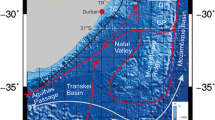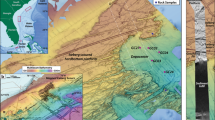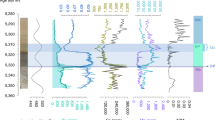Abstract
The high thermal gradient and heat flow >1000 mW m-2 on Håkon Mosby Mud Volcano are ascribed to rapid transport of pore water, mud, and gas in a narrow, deep conduit within a 3.1-km-thick glacial sediment unit. The instability is caused by rapid loading of dense glacial sediments on less dense oozes. Changes in pressure–temperature conditions by sudden, large-scale downslope mass movement may induce structural deformation, opening transient pathways from the base of the glacial sediments to the sea floor. This model may also explain slope maxima elsewhere on the margin.
Similar content being viewed by others
Author information
Authors and Affiliations
Rights and permissions
About this article
Cite this article
Eldholm, O., Sundvor, E., Vogt, P. et al. SW Barents Sea continental margin heat flow and Håkon Mosby Mud Volcano. Geo-Marine Letters 19, 29–37 (1999). https://doi.org/10.1007/s003670050090
Issue Date:
DOI: https://doi.org/10.1007/s003670050090




